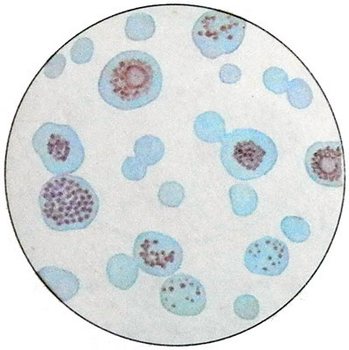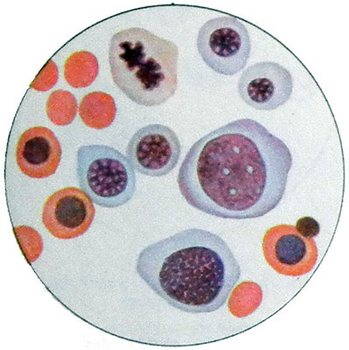Acute hemorrhagic anemia – Anemia, associated with blood loss
Under acute hemorrhagic anemia understand anemia, It is a result of the rapid loss of a significant amount of blood.
The pathogenesis of acute post-hemorrhagic anemia
In the pathogenesis of main clinical manifestations of acute blood loss plays a major role evolved sharply reducing the total volume of blood, especially its plasma part.
Reducing the amount of circulating red blood cells leads to acute hypoxia - The appearance of shortness of breath, heartbeat. Development of the collapse or reduction of blood pressure within safe levels is primarily due to the loss of plasma. During bleeding, and immediately afterwards he celebrated the release of adrenal catecholamines and peripheral vascular spasm. The decrease in the vascular bed contributes to compensate blood loss. However, prolonged peripheral vascular spasm has adverse effects on the microcirculation and can lead to shock.
One of the most important mechanisms for self-regulation of the body is autogemodilûciâ by mobilizing their own interstitial fluid and release it into the bloodstream. If autogemodilyutsiya expressed insufficient or exhausted, decompensation occurs and, without the required treatment, the patient dies. In connection with hypoxia, associated with blood loss, increases the content of erythropoietin, the consequence of which is the increased proliferation of cells, followed by eritropoetinchuvstvitelnyh percent increase erythrokaryocytes.
Also, there is release of reticulocytes in peripheral blood.

Clinical manifestations of acute post-hemorrhagic anemia
For acute post-hemorrhagic anemia is characterized above all the symptoms of collapse. The patient has severe weakness, dizziness, paleness, dry mouth, cold sweat, vomiting. Reduces arterial and venous pressure, reduced cardiac output. The pulse quickens sharply, It becomes weak.
The clinical picture is determined by the amount of blood lost, the rate of its expiry, to some extent, and the source of blood loss. There is evidence of varying degrees of compensation depending on the source of bleeding.
To assess the degree of blood loss is recommended to use the following formula:
P = K 44 * lgShI,
where P - blood loss, %;
K - coefficient, that blood loss from the stomach and intestines is 27, for abdominal bleeding - 33, in wounds of limbs - 24 and chest trauma 22;
SHI - shock index, equal to the ratio of pulse rate to systolic pressure.
The degree of anemia not an indication of the amount of blood lost. This is, that in acute blood loss reduced the size of the vascular bed. When a large blood loss during the first hours can significantly reduce the level of hemoglobin and red blood cells, hematocrit is not changed and only the study of volume of circulating red blood cells may reveal a significant decrease in this indicator.
Laboratory tests in acute post-hemorrhagic anemia
If the bleeding was stopped, 2-3 days begins reduction of hemoglobin and red blood cells, mainly due to the penetration of tissue fluid in blood. As a result, the first time after blood loss anemia is normochromic character.
The content of blood platelets during the bleeding may be reduced due to the considerable consumption of platelets, mobilized to stop the bleeding, lack of specific platelet depot.
Such consumption thrombocytopenia can sometimes cause the assumption, that lies at the heart bleeding thrombocytopenic purpura.
After 2-3 days the platelet count does not only come to the norm, but in most cases exceeds the. The number of leukocytes, there is a significant shift to the left of neutrophilic granulocytes, there polihromaziya, marked unit erythrokaryocytes. Since most blood loss leads to a significant loss of iron, develops its deficit, Although the iron content in blood serum for a predetermined time may be normal, especially to the massive bleeding in a patient did not have iron deficiency.
Laboratory diagnosis of acute post-hemorrhagic anemia very difficult. It should be remembered, the diagnosis of major bleeding, hidden to the eye doctor, It should be based primarily on data not Laboratories, and on clinical signs, supported by the results of certain laboratory tests, in particular, identifying strongly positive sample and benzidine reaction Weber in the study of feces of the patient in case of bleeding from the stomach and intestines, increased levels of residual nitrogen in bleeding from the upper parts of the stomach and intestines due to the absorption of significant amounts of amino acids, produced in the decay of blood, located in the stomach and duodenum. The content of urea remains normal.

